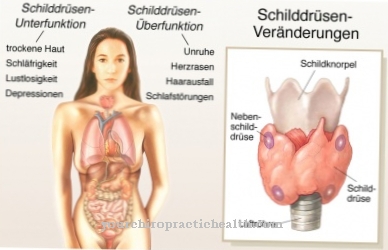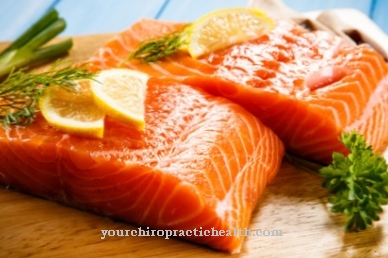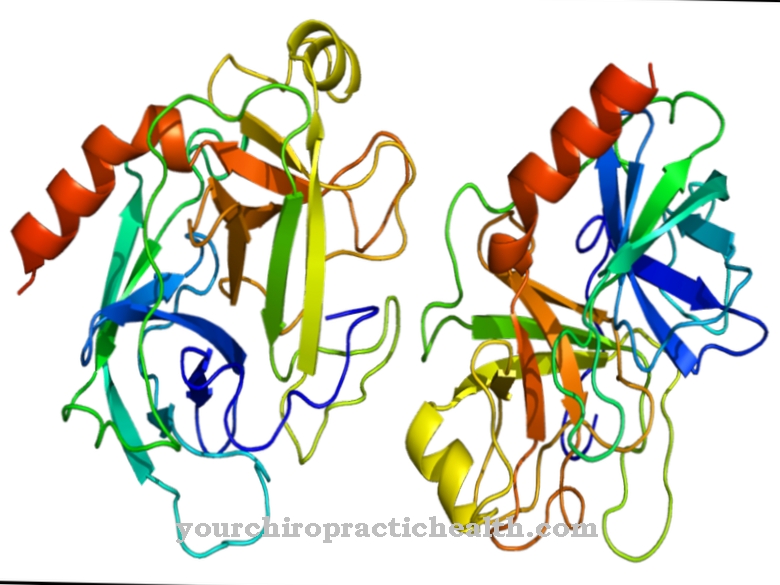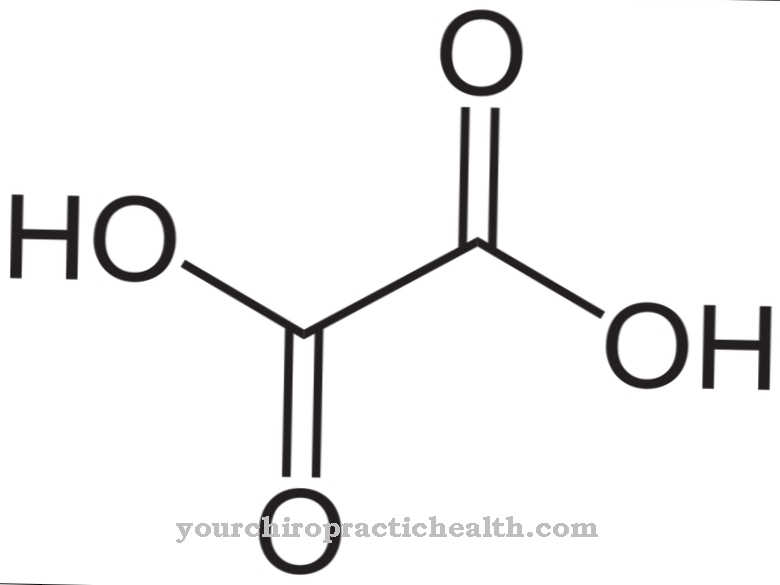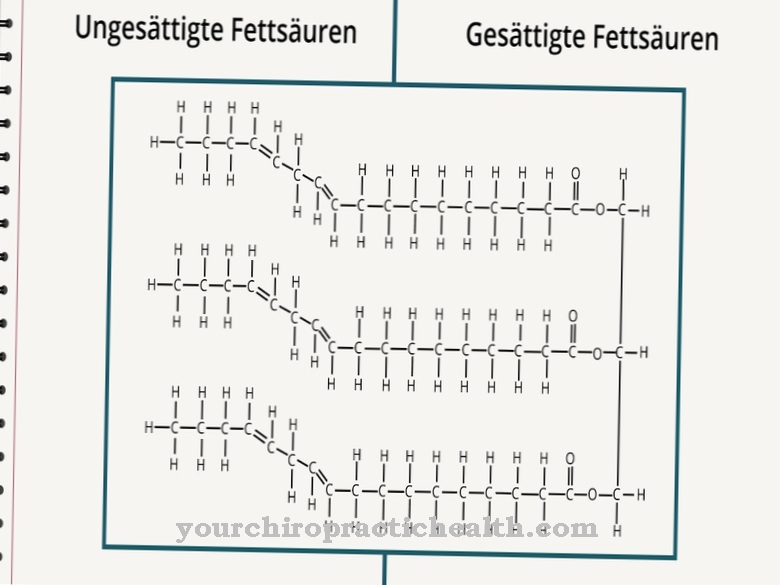Plasminogen Activator Inhibitors, also known as PAI are proteins in the blood that play a role in blood clotting. They inhibit the dissolution of blood clots.
What is the Plasminogen Activator Inhibitor?
A plasminogen activator inhibitor is a protein that is found in the blood and is involved in blood clotting. Blood clotting is an important process that can stop bleeding. This is the only way to prevent excessive leakage of blood from the bloodstream in the event of injuries.
A distinction can be made between four different types of plasminogen activator inhibitors. The main plasminogen activator inhibitor is type 1 (PAI-1). It inhibits the tissue-specific plasminogen activator and urokinase. The type 2 plasminogen activator inhibitor (PAI-2) occurs in large quantities only during pregnancy.
Function, effect & tasks
The plasminogen activator inhibitor is produced by different cells of the visceral fat. Visceral fat is also called intra-abdominal fat. It is located inside the abdominal cavity and envelops the internal organs. It serves to protect these organs and also as an energy reserve.
Within this visceral fat, endothelial cells, adipocytes and megakaryocytes produce the plasminogen activator inhibitor type 1. The majority of the inhibitor is, however, formed in the platelets. Platelets are platelets and the smallest cells in the blood. They also play an important role in blood clotting and release PAI-1 in the primary closure of wounds in the case of defects in the vascular wall. Only in obesity and in type 2 diabetes mellitus does the production of plasminogen activator inhibitors increase.
The reason is the increase in visceral fat. The type 1 plasminogen activator inhibitor is inhibited by aleplasinin, a drug that is primarily used against Alzheimer's disease. The type 2 plasminogen activator inhibitor is formed by the placenta, i.e. the placenta, during pregnancy. Outside of pregnancy, this inhibitor is virtually non-existent. The other two types are also negligible.
Education, occurrence, properties & optimal values
The main function of PAI-1 is to inhibit plasminogen activators. The two most important plasminogen activators are tPA (tissue plasminogen activator) and uPA (urokinase plasminogen activator). Both tPA and uPA convert the inactive proenzyme plasminogen into the active enzyme plasmin. Plasmin is an enzyme that belongs to the group of peptidases. It can break down and break down proteins in the blood. In particular, plasmin breaks down the fibrin in blood clots. This process is also known as fibrinolysis.
The difficulty with fibrinolysis lies in finding the optimal balance between bleeding and thrombosis. Fibrinolysis is activated at the same time as blood clotting. The inhibition takes place according to the general reaction mechanism of the serpins by PAI-1. Most of this inhibitor is in the platelets. In the event of a vascular or tissue injury, the platelets circulating in the blood stick to the defective cell walls. They change their appearance due to various factors and thus loosely cover the wound area.
The platelets also stick together. This creates the first provisional wound closure. In a second step, the secondary hemostasis, this loose closure is reinforced by fibrin threads. The coagulation factors are relevant for this. So that this fibrin structure does not dissolve again directly, the platelets release the plasminogen activator inhibitor type 1.
Diseases & Disorders
With an increase in visceral fat, as already mentioned, there is an increase in the production of plasminogen activator inhibitor type 1. One cause of such an increase in visceral fat is type 1 diabetes mellitus. This is a metabolic disease with increased sugar levels in the blood serum.
Even in the case of obesity, i.e. pathological overweight, there is an increase in belly fat. The same applies to the metabolic syndrome. The metabolic syndrome is often referred to as the fatal quartet, as it is considered to be one of the decisive risk factors for vascular disease. The metabolic syndrome includes abdominal obesity, high blood pressure, increased blood lipid levels, a deficiency in HDL cholesterol and an increased sugar concentration in the blood or insulin resistance.
The metabolic syndrome is particularly common in industrialized countries and is exacerbated by overeating and lack of exercise. An increase in the secretion of PAI-1 leads to decreased fibrinolysis. This promotes clot formation in peripheral vessels. With the increased formation of clots within the vessels, the risk of developing secondary diseases also increases.
It becomes dangerous when a clot breaks loose and causes an embolism. An embolism is a vascular occlusion caused by a blood clot, a drop of fat, or air bubbles. If a thrombus loosens from a vein, this can result in a pulmonary embolism. The thrombus blocks one or more pulmonary arteries. This leads to a congestion of blood in front of the clot and thus to an increase in pressure in the pulmonary circulation. One speaks here of pulmonary hypertension. This increase in pressure puts a strain on the right heart. There is a risk of heart failure.
However, an increase in the type 1 plasminogen activator inhibitor can also cause clots to form in the coronary vessels.If a vessel is completely blocked, a heart attack can occur. In a heart attack, heart tissue dies due to an insufficient supply of oxygen. Characteristic symptoms of a heart attack are sudden severe pain. These are also known as annihilation pains. They can radiate into the neck, back or arms. Common accompanying symptoms are cold sweat, shortness of breath, nausea and paleness.
A stroke can also result from an excess of plasminogen activator inhibitors. Here, as a result of a clot, there is a lack of blood supply to the brain and thus the failure of important functions of the central nervous system.

